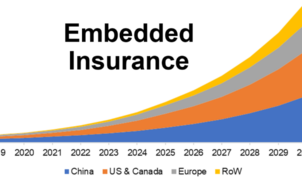
Choosing car insurance is a crucial and necessary decision for owners of a new car. To protect your asset and ensure safety while on the road, here are some basic guidelines to help you select the most suitable insurance package.
1. Understanding Different Types of Car Insurance
Car insurance is an essential safeguard for vehicle owners, providing protection against various risks. Understanding the diverse types of car insurance policies is crucial for making an informed decision that best suits individual needs.
1. Third-Party Liability Insurance:
Overview: Third-party liability insurance is mandatory in most regions. It covers liability towards third parties for injuries or damages caused by your vehicle.
Significance: This policy safeguards you against legal and financial liabilities if your car causes injury to another person or damages their property.
Considerations: While this insurance type is essential and legally required, it’s limited in covering damages to your vehicle or injuries sustained by you.
2. Comprehensive Car Insurance:
Overview: Comprehensive insurance offers extensive coverage beyond third-party liabilities, encompassing a wide range of risks and damages.
Coverage Scope: It includes protection against theft, vandalism, fire, natural disasters, and damage from collisions.
Advantages: Comprehensive insurance provides a broader safety net, offering financial security for your vehicle against a myriad of potential risks.
Considerations: Despite its comprehensive coverage, this policy might have a higher premium compared to third-party liability insurance.
3. Collision Coverage:
Overview: Collision coverage specifically insures damages incurred due to collisions with other vehicles or objects.
Scope: It covers repair expenses for your vehicle in case of accidents, irrespective of fault.
Benefits: Collision coverage ensures your vehicle is repaired or replaced after an accident, offering peace of mind.
Factors to Consider: It’s important to assess the vehicle’s value and potential repair costs against the premium to determine if this coverage is cost-effective.
4. Personal Injury Protection (PIP) Insurance:
Overview: PIP insurance provides coverage for medical expenses for you and your passengers in the event of an accident.
Coverage Details: It covers medical bills, lost wages, and other related expenses resulting from injuries sustained in a car accident.
Advantages: PIP insurance ensures prompt medical attention and financial assistance for injuries, regardless of fault.
State Regulations: PIP coverage might not be available in all regions, and its scope may vary based on state regulations.
5. Uninsured/Underinsured Motorist Coverage:
Overview: This coverage protects you if involved in an accident with a driver who has inadequate or no insurance.
Scope: It covers medical expenses, lost wages, and damages if the at-fault party lacks sufficient insurance to cover your losses.
Importance: It acts as a safety net in scenarios where the other driver is at fault but lacks adequate coverage, ensuring you’re not financially burdened.
Understanding these types of car insurance is crucial to select the most suitable policy. Each policy has distinct advantages, considerations, and limitations, and choosing the right combination can provide comprehensive coverage while aligning with your budget and needs.
2. Assessing Your Needs for Car Insurance
When considering car insurance, it’s essential to assess your individual needs to ensure you select a policy that adequately protects your vehicle and aligns with your financial capabilities.
1. Vehicle Value and Usage:
- Vehicle Assessment: Evaluate the value of your car. A newer or more expensive vehicle might benefit from comprehensive coverage to safeguard against potential damage or theft.
- Usage Patterns: Consider how often and where you drive. Frequent commuters or those driving in high-risk areas may require more comprehensive coverage.
2. Financial Considerations:
- Budget Constraints: Assess your financial situation to determine how much you can afford to spend on insurance premiums. Balance the coverage you need with what you can comfortably pay.
- Deductibles and Premiums: Understand how deductibles and premiums affect each other. Higher deductibles might lower premiums but could lead to higher out-of-pocket expenses in case of a claim.
3. Legal Requirements and Lender Obligations:
- Legal Obligations: Understand the mandatory insurance requirements in your state or region. Ensure you meet these minimum requirements to legally operate your vehicle.
- Lender Requirements: If you’re financing or leasing the car, your lender might have specific insurance requirements. Check whether comprehensive coverage is mandatory as per the loan agreement.
4. Personal Assets and Liability Concerns:
- Asset Protection: Consider your personal assets and the potential risk of being sued. Adequate liability coverage protects your assets in case of an accident for which you’re liable.
- Family and Dependents: Assess the needs of your family or dependents who might use the vehicle. Ensuring adequate coverage for their safety is paramount.
5. Driving Record and Past Incidents:
- Driving History: Your driving record influences insurance rates. A clean driving record might qualify for lower premiums, while past incidents might impact premiums and coverage options.
- Previous Claims: Review past insurance claims and assess the frequency and nature of past incidents to gauge the level of coverage needed.
6. Additional Coverage Requirements:
- Specific Risks: Identify any specific risks relevant to your circumstances, such as extreme weather conditions or high-theft areas, that might require additional coverage.
- Rental Car Coverage: If you frequently rent cars, consider supplemental coverage for rental vehicles as it might not be covered in standard policies.
7. Future Financial Planning:
- Emergency Fund: Consider having an emergency fund to cover potential deductibles or expenses not covered by insurance, providing an added layer of financial security.
- Long-Term Planning: Review your long-term financial plans and how insurance costs might fit into those plans. Sometimes, investing in more comprehensive coverage might be beneficial in the long run.
8. Review and Reassessment:
- Annual Review: Regularly reassess your insurance needs, especially when circumstances change, such as changes in driving habits, vehicle upgrades, or life events.
Understanding and assessing these factors can guide you towards selecting an insurance policy that meets your needs while providing adequate protection. Balancing coverage options with personal requirements ensures a well-suited insurance plan that provides peace of mind while driving.

3. Comparing and Researching the Car Insurance Market
When seeking car insurance, conducting thorough research and comparing different insurance providers is crucial to make an informed decision. Here’s a detailed look at the essential aspects of comparing and researching the car insurance market:
1. Understanding Coverage Options:
- Policy Inclusions: Understand what each policy offers in terms of coverage. Compare the coverage types, such as liability, comprehensive, collision, and additional add-ons, to evaluate which best suits your needs.
- Exclusions and Limitations: Look into policy exclusions and limitations. Pay attention to specific conditions that might not be covered, ensuring that the policy meets your expectations.
2. Assessing Premium Costs:
- Comparing Premiums: Obtain quotes from various insurance providers to compare premium costs. Ensure you’re comparing similar coverage levels and deductibles for an accurate assessment.
- Discounts and Offers: Inquire about available discounts or special offers. These could include safe driver discounts, multi-policy discounts, or discounts for certain safety features installed in your vehicle.
3. Reviewing Customer Feedback:
- Customer Reviews: Research customer reviews and feedback about different insurance companies. Pay attention to reviews regarding claim processing, customer service, and overall satisfaction.
- Ratings and Rankings: Refer to independent rating agencies or consumer advocacy groups that rank insurance companies based on customer satisfaction and financial stability.
4. Understanding Policy Terms:
- Policy Details: Read policy documents thoroughly. Understand the terms, conditions, coverage limits, deductibles, and any other relevant information to ensure it aligns with your requirements.
- Policy Flexibility: Look for insurers offering flexibility in policy terms, allowing adjustments or additions to suit changing needs without excessive charges.
5. Financial Stability and Reputation:
- Company Reputation: Assess the reputation of insurance companies in the market. Consider their history, track record, and the number of years in operation to gauge reliability.
- Financial Stability: Evaluate the financial stability of insurance providers by reviewing their financial ratings from agencies like Standard & Poor’s, A.M. Best, or Moody’s.
6. Claim Settlement Process:
- Claims Handling: Research the claim settlement process of different insurers. Look for companies known for prompt and hassle-free claim processing.
- Claim Complaints: Check for any complaints or disputes regarding claim settlements. A history of unresolved issues might indicate potential difficulties in processing claims.
7. Agent and Customer Support:
- Agent Assistance: Evaluate the quality of agent assistance or customer support. Having a reliable agent or efficient customer service can simplify the insurance process.
- Accessibility: Consider the ease of reaching out to the insurer for queries, changes, or in case of emergencies, including online support and available communication channels.
8. Regulatory Compliance and Licensing:
- Regulatory Compliance: Ensure the insurance company is licensed and compliant with state regulations. This confirms their legitimacy and adherence to legal standards.
- Complaint Records: Check state insurance department websites for complaint records against insurance companies. High complaint rates may signal potential issues.
9. Comparing Additional Benefits:
- Add-Ons and Extras: Compare additional benefits offered by different insurers, such as roadside assistance, rental car coverage, or coverage for customized parts.
- Value-Added Services: Consider value-added services provided by insurers, like educational materials, apps for policy management, or additional perks for policyholders.
10. Seeking Professional Advice:
- Consultation with Agents: Seek advice from independent insurance agents or brokers. They can provide guidance based on your specific needs and offer policies from multiple insurers.
Conducting meticulous research and comparisons among insurance providers helps in selecting a policy that not only fits your budget but also offers adequate coverage. Making an informed decision based on comprehensive market research ensures that you obtain the best possible car insurance for your needs.

4. Considering Additional Options in Car Insurance
When choosing a car insurance policy, considering additional options or add-ons can enhance the coverage and provide extra protection. Here’s a detailed analysis of the significance of considering supplementary options in car insurance:
1. Roadside Assistance:
- Service Details: Roadside assistance covers services such as towing, jump-starting a dead battery, flat tire changes, and emergency fuel delivery.
- Benefits: It offers peace of mind knowing that help is just a phone call away in case of breakdowns or emergencies, adding convenience and ensuring prompt assistance on the road.
2. Rental Car Reimbursement:
- Coverage Scope: This option provides reimbursement for the cost of renting a car while your vehicle is being repaired due to an accident covered by your policy.
- Importance: It ensures continued mobility and convenience, preventing disruptions to your daily routine while your car is out of commission.
3. Comprehensive Glass Coverage:
- Glass Repair or Replacement: This coverage includes repair or replacement costs for damages to your windshield or other glass parts of your vehicle.
- Advantages: It minimizes out-of-pocket expenses for glass damages, preventing potential safety hazards caused by driving with compromised glass.
4. Accident Forgiveness:
- Policy Benefit: Some insurers offer accident forgiveness, where your premium doesn’t increase after your first at-fault accident.
- Significance: It helps maintain a stable premium rate despite an at-fault accident, providing financial relief in the event of an unexpected mishap.
5. New Car Replacement Coverage:
- Coverage Period: This option replaces a new car with a similar model if yours is declared a total loss within a specific timeframe, usually the first year or two of ownership.
- Value Addition: It ensures that in the event of a severe accident, you can replace your new car with another one of the same make and model, avoiding depreciation losses.
6. Custom Parts and Equipment Coverage:
- Coverage Details: This coverage protects aftermarket modifications or added accessories to your vehicle, like stereo systems or customized parts.
- Benefits: It safeguards the investment made in customizing your vehicle, covering damages or losses to these enhancements.
7. Personal Umbrella Policy:
- Extended Liability Protection: A personal umbrella policy provides additional liability coverage above and beyond the limits of your standard auto policy.
- Comprehensive Protection: It offers broader protection against lawsuits and higher liability claims that may exceed your standard policy limits.
8. Gap Insurance:
- Coverage Scope: Gap insurance covers the difference between the actual cash value of your car and the amount you owe on a car loan or lease.
- Value in Total Loss: It’s beneficial in scenarios where your vehicle is declared a total loss, ensuring you’re not left paying off a loan for a car you no longer possess.
9. Pet Injury Coverage:
- Coverage for Pets: Some policies offer coverage for veterinary bills or injury costs for pets involved in a car accident.
- Protection for Pets: It provides financial support for veterinary expenses in case your pet is injured while riding in your vehicle.
10. Usage-Based Insurance (UBI):
- Driving Behavior Analysis: UBI programs monitor driving habits like speed, mileage, braking, and time of day to determine premiums.
- Potential Savings: Safe driving habits could lead to reduced premiums, making it a cost-effective option for cautious drivers.
Considering these additional options allows policyholders to tailor their insurance coverage according to their specific needs and preferences. Each add-on offers unique benefits that can significantly enhance the overall protection provided by the insurance policy.

5. Policy Details in Car Insurance
Understanding the intricate details of a car insurance policy is crucial for policyholders to make informed decisions and ensure the coverage meets their needs. Here is an in-depth exploration of the significance of understanding policy details:
1. Coverage Components:
- Liability Limits: Determine the coverage limits for bodily injury and property damage liability. These limits indicate the maximum amount the insurer will pay in case of an accident where you’re at fault.
- Collision Coverage: Understand the terms of collision coverage, including deductibles and reimbursement methods for repairing or replacing your vehicle after an accident.
- Comprehensive Coverage: Familiarize yourself with comprehensive coverage, which protects against non-collision-related damages such as theft, vandalism, or natural disasters.
2. Deductibles and Premiums:
- Deductible Amounts: Know your deductible – the amount you’ll pay out-of-pocket before insurance kicks in. Higher deductibles usually lead to lower premiums but mean higher initial expenses in case of a claim.
- Premium Payment Details: Understand the premium payment schedule, frequency, and methods of payment. Late payments might result in policy cancellations or penalties.
3. Exclusions and Limitations:
- Excluded Perils: Identify specific situations or perils not covered by your policy, such as intentional damage, wear and tear, or driving under the influence.
- Policy Limitations: Be aware of any limitations within the policy, like coverage caps for certain types of damages or restrictions on vehicle usage.
4. Additional Benefits and Endorsements:
- Add-Ons and Endorsements: Review any additional benefits or endorsements attached to the policy, such as roadside assistance, rental car coverage, or customized equipment coverage.
- Endorsement Terms: Understand the terms and conditions of these add-ons, including coverage limits, conditions for claiming benefits, and any associated costs.
5. Renewal and Cancellation Terms:
- Renewal Terms: Know the renewal process, including any changes in premiums, terms, or coverage that might occur at renewal.
- Cancellation Policies: Understand the conditions and penalties for policy cancellations. Being aware of the cancellation process can prevent unexpected financial or coverage gaps.
6. Policy Expiry and Grace Periods:
- Policy Expiry Date: Be aware of your policy’s expiration date and the consequences of driving without insurance after expiration.
- Grace Period: Some policies offer a grace period after the expiration date for renewals. Familiarize yourself with this period to avoid coverage lapses.
7. Claim Filing Procedures:
- Claims Process: Understand the procedures for filing claims, including required documentation, timelines, and contact information for claims processing.
- Emergency Contacts: Keep emergency contact information readily available in case of accidents or claims, including insurer contact details and policy information.
8. Renewal Terms and Adjustments:
- Policy Adjustments: Understand how policy adjustments or changes are made and the potential impact on premiums or coverage.
- Review Periodically: Regularly review policy documents, especially after any life changes or modifications to ensure continued adequate coverage.
9. Insurance Language and Terminology:
- Key Terms: Familiarize yourself with insurance jargon and terminology used in the policy documents. Seek clarification on terms you’re unsure about to avoid misunderstandings.
- Policy Clauses: Pay attention to specific clauses, conditions, or legal language that might affect coverage or claim settlements.
10. Legal and Regulatory Compliance:
- State Requirements: Ensure that your policy complies with state or regional insurance requirements to avoid legal penalties.
- Policy Legitimacy: Verify that the insurance provider is licensed and authorized to sell policies in your area, confirming the legitimacy of the coverage.
Understanding these policy details is essential for policyholders to make informed decisions and effectively utilize their insurance coverage when needed, avoiding potential disputes or coverage gaps.

6. Consulting with Experts in Car Insurance
Seeking advice from insurance experts, such as independent agents or brokers, can offer valuable insights and guidance when navigating the complexities of car insurance. Here’s an in-depth exploration of the significance of consulting with experts:
1. Independent Insurance Agents:
- Expert Advice: Independent agents work with multiple insurance carriers, offering insights into various policies and coverage options available in the market.
- Tailored Recommendations: They assess your individual needs and provide personalized recommendations based on your specific circumstances and preferences.
2. Insurance Brokers:
- Specialized Knowledge: Brokers possess in-depth knowledge of insurance products and can provide advice on complex policies or unique coverage requirements.
- Access to Multiple Providers: They often have access to a wide range of insurers, allowing them to compare policies from different providers to find the most suitable one for you.
3. Advantages of Expert Consultation:
- Clarity in Policy Understanding: Experts can explain complex insurance jargon and policy terms in simpler language, ensuring you fully comprehend the coverage details.
- Policy Customization: Professionals help tailor policies to meet your specific needs, ensuring you’re neither over-insured nor under-insured.
4. Claims Handling Assistance:
- Claims Guidance: Experts can guide you through the claims process, assisting in preparing necessary documentation and ensuring timely and fair claim settlements.
- Claims Advocacy: They act as advocates on your behalf when dealing with the insurance company, ensuring your rights are protected during claims settlements.
5. Expertise in Risk Assessment:
- Risk Evaluation: Professionals can assess potential risks associated with your driving habits, location, vehicle type, and other factors, recommending suitable coverage based on risk assessment.
- Risk Mitigation Strategies: They offer strategies to mitigate identified risks, providing advice on improving safety measures or reducing potential liabilities.
6. Policy Comparison and Market Analysis:
- Comparative Analysis: Experts compare policies from various insurers, analyzing coverage, deductibles, premiums, and additional benefits to help you make informed decisions.
- Market Insights: They provide insights into market trends, pricing fluctuations, and new insurance products, enabling you to stay updated on available options.
7. Compliance and Legal Insights:
- Regulatory Adherence: Professionals ensure your policy complies with legal requirements, preventing potential issues due to non-compliance with state regulations.
- Legal Implications: They provide insights into the legal implications of policy clauses, helping you understand your rights and obligations as a policyholder.
8. Objective Recommendations:
- Impartial Advice: Independent agents and brokers offer impartial recommendations, focusing on your best interests rather than promoting specific insurance companies.
- Transparent Information: They provide transparent information about commissions or fees, ensuring transparency in their dealings.
9. Accessibility and Follow-Up Support:
- Accessibility: Experts are accessible for queries, clarification, or policy adjustments, offering ongoing support throughout the policy term.
- Periodic Reviews: They conduct periodic policy reviews to reassess your coverage needs, adjusting policies as your circumstances change.
10. Cost-Effective Solutions:
- Cost Optimization: Professionals assist in finding cost-effective solutions without compromising on necessary coverage, maximizing the value of your insurance investment.
Consulting with insurance experts offers a wealth of knowledge, personalized guidance, and a deeper understanding of insurance options, empowering policyholders to make well-informed decisions aligned with their needs and budget.

7. Check Claims Procedures
Knowing the intricacies of the claims process is crucial as it determines how efficiently and fairly an insurance company handles your claim. Here’s a detailed exploration of the significance of checking claims procedures in car insurance:
1. Familiarizing with Claims Filing:
- Documentation Requirements: Understand the required documentation for filing a claim, including accident reports, police reports, medical records, and photographs of damages.
- Timely Reporting: Know the timeframe within which claims must be reported to the insurer after an incident to avoid potential claim denials due to late filings.
2. Claims Processing Steps:
- Claim Submission: Know the methods for submitting claims, such as online portals, phone, or in-person submissions, and follow the insurer’s preferred procedure.
- Claim Acknowledgment: Understand the timeline for claim acknowledgment from the insurer and the subsequent steps in the claims processing chain.
3. Assessment and Evaluation:
- Claim Investigation: Be aware of the insurer’s investigation process, including assessment of damages, interviews, and inspections to determine liability.
- Claim Evaluation: Understand how the insurer evaluates the claim and calculates the settlement amount, considering policy coverage and any deductibles.
4. Timelines and Communication:
- Claim Status Updates: Be informed about the expected timelines for claim resolution and how frequently you can expect updates regarding your claim’s progress.
- Communication Channels: Understand the available communication channels for inquiries or updates on the claim status and how promptly the insurer responds to queries.
5. Dispute Resolution and Appeals:
- Dispute Resolution Process: Familiarize yourself with the steps to resolve disputes, such as mediation or arbitration, if disagreements arise regarding claim settlements.
- Appeals Process: Know the procedures for appealing a claim denial or an unsatisfactory settlement, including deadlines for filing appeals.
6. Settlement Options:
- Cash Settlement: Understand the process for receiving a cash settlement for repairs or replacement costs and the insurer’s preferred payment methods.
- Repair Process: If opting for repairs, know the preferred repair shops or how to coordinate repair assessments with the insurer’s network of garages.
7. Legal Considerations:
- Legal Assistance: Know your rights and options for seeking legal counsel or representation if the claims process becomes complicated or if there are disputes.
- Understanding Policy Clauses: Understand how policy clauses might affect claims settlements, especially concerning coverage limitations or exclusions.
8. Reviewing Claim Histories:
- Past Claim Assessments: Review the insurer’s history of handling claims, including their claim settlement ratios and any complaints or disputes lodged against them.
- Learning from Past Experiences: Analyze past claims experiences, if any, to understand how efficiently the insurer handles claims and resolves issues.
9. Expert Assistance and Documentation:
- Professional Guidance: Seek assistance from experts, like legal advisors or independent appraisers, to navigate complex claims procedures and ensure fair settlements.
- Thorough Documentation: Keep meticulous records of all communication, documentation, and transactions related to the claim for reference and evidence if needed.
10. Post-Settlement Support:
- Claim Closure Process: Understand the procedures for closing a claim file after settlement, including confirming the satisfaction of all settlement terms.
- Post-Settlement Assistance: Be aware of any post-settlement support offered by the insurer, such as follow-up checks or assistance in case of unforeseen issues.
Knowing the claims procedures and being well-prepared can significantly streamline the claims process, ensuring fair and efficient settlements in case of unforeseen circumstances or accidents.
8. Check Additional Features
Exploring and understanding the additional features or add-ons offered in car insurance policies can significantly enhance coverage and provide tailored protection. Here’s a detailed exploration:
1. Roadside Assistance:
- Service Inclusions: Understand what roadside assistance covers, such as towing, battery jump-starts, flat tire changes, and emergency fuel delivery.
- Importance: This feature provides peace of mind, ensuring prompt assistance during breakdowns or emergencies, reducing inconveniences on the road.
2. Rental Car Reimbursement:
- Coverage Scope: This feature reimburses rental car costs while your vehicle is under repair due to an accident covered by your policy.
- Value Addition: It maintains mobility, preventing disruptions to your routine while your car is unavailable, and ensuring continued transportation.
3. Comprehensive Glass Coverage:
- Repair/Replacement Coverage: Understand coverage for damages to your windshield or other glass parts of the vehicle.
- Advantages: It minimizes out-of-pocket expenses for glass damages, maintaining safety and preventing further damage.
4. Accident Forgiveness:
- Policy Benefit: Some insurers offer accident forgiveness, ensuring that premiums don’t increase after the first at-fault accident.
- Financial Relief: This feature provides financial relief by avoiding increased premiums following an unexpected at-fault accident.
5. New Car Replacement Coverage:
- Coverage Period: This feature replaces a new car with a similar model if yours is declared a total loss within a specific timeframe (often the first year or two).
- Value Protection: It prevents significant financial losses, ensuring the replacement of a new vehicle without depreciation considerations.
6. Custom Parts and Equipment Coverage:
- Coverage Details: Protection for aftermarket modifications or added accessories in the vehicle.
- Advantages: It safeguards the investment made in customizing the vehicle, covering damages or losses to these enhancements.
7. Personal Umbrella Policy:
- Extended Liability Protection: Provides additional liability coverage beyond standard auto policy limits.
- Comprehensive Protection: Offers broader protection against lawsuits and higher liability claims that might surpass standard policy limits.
8. Gap Insurance:
- Coverage Scope: Covers the difference between the actual cash value of the vehicle and the amount owed on a car loan or lease.
- Value in Total Loss: It prevents paying off a loan for a car that’s no longer in possession in case of a total loss.
9. Pet Injury Coverage:
- Coverage for Pets: Some policies offer coverage for veterinary bills or injury costs for pets involved in a car accident.
- Pet Protection: Financial support for veterinary expenses in case a pet is injured while riding in the insured vehicle.
10. Usage-Based Insurance (UBI):
- Driving Behavior Analysis: UBI monitors driving habits like speed, mileage, braking, and time of day to determine premiums.
- Potential Savings: Safe driving habits could lead to reduced premiums, making it cost-effective for cautious drivers.
Understanding these additional features allows policyholders to tailor their coverage to suit specific needs, providing enhanced protection beyond standard policy offerings.

Conclusion:
Selecting the best car insurance for your new vehicle requires focus and caution. You should have a clear understanding of policy terms, compare insurance packages, and define your individual needs for a smart decision and optimal protection for your car.







 Welcome to LawyerNote, your premier destination for expert legal counsel tailored to your unique needs. At LawyerNote, we specialize in navigating the complexities of the legal system, offering comprehensive solutions to our valued clients. With a team of seasoned attorneys covering diverse fields including corporate law, family law, and criminal defense, we’re equipped to handle a wide spectrum of legal matters. Our unwavering commitment to excellence, integrity, and client satisfaction sets LawyerNote apart. Whether you’re grappling with a complex litigation case or seeking guidance on business transactions, LawyerNote is your trusted legal partner every step of the way.
Welcome to LawyerNote, your premier destination for expert legal counsel tailored to your unique needs. At LawyerNote, we specialize in navigating the complexities of the legal system, offering comprehensive solutions to our valued clients. With a team of seasoned attorneys covering diverse fields including corporate law, family law, and criminal defense, we’re equipped to handle a wide spectrum of legal matters. Our unwavering commitment to excellence, integrity, and client satisfaction sets LawyerNote apart. Whether you’re grappling with a complex litigation case or seeking guidance on business transactions, LawyerNote is your trusted legal partner every step of the way.




